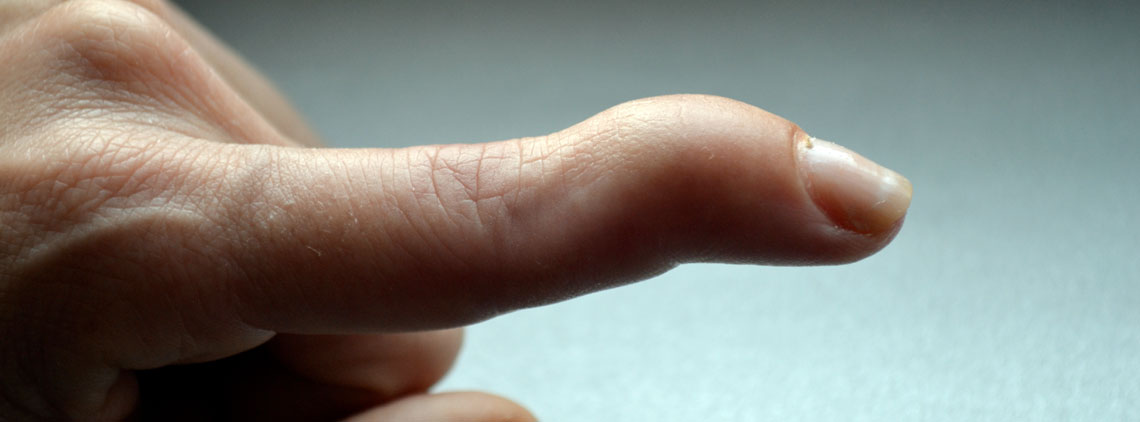
Mallet or Baseball Finger
Overview
Are you unable to straighten the tip of your finger? You may have a Mallet or Baseball Finger which occurs when the tip of the finger (or thumb) forcefully bends further than it should go. This causes an injury to your tendon. A tendon connects our muscles to our bones. We have two tendons in each hand, one on the top and one on the palm of our hand. The tendon on the palm of our hand (flexor) allows us to bend our fingers and the one on the top of our hand (extensor) allows us to straighten our finger. Sometimes our injury causes a piece of bone to break in addition to the damage to our tendon.
Injuries can occur to our fingers causing a tear in the extensor tendon preventing us from straightening our fingers. If you don’t treat your injury, it could result in a lifetime of stiffness and deformity. In addition to the deformity of your finger, you may also have a painful, swollen, and bruised finger. This typically occurs in young to middle-aged males and older females. When this injury occurs to children, we must treat the finger to ensure the growing portion of the finger is healthy to avoid a later finger deformity.
If you believe you have a mallet finger, immediately ice the injury and hold your hand above your head towards the ceiling. This will decrease the amount of swelling associated with this injury.
Nonsurgical Treatment Options for Mallet or Baseball Finger
During an in-office examination, we will look at your hand and fingers. We will perform a mallet finger test. During this test, we hold your mallet finger and ask you to straighten the tip on your own. We will also look for injuries to the nail or nailbed. Then we may order an x-ray of the injury to see what’s happening under the skin. This will show us if your bones are misaligned or if there’s a tendon rupture. It will also show us if your injury caused a fracture of the bone.
Often mallet fingers are splinted which will hold your finger straight until the fingertip heals. You can expect to wear the splint for six to eight weeks without removing it to wash your hands or shower. Then you will carefully change the splint after a shower. We will examine your finger to ensure it’s healing correctly. Then you will wear the splint for three or four more weeks only during your sleep. Several exercises will be provided for you to get the finger moving fully again.

